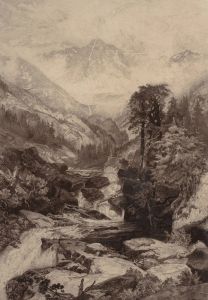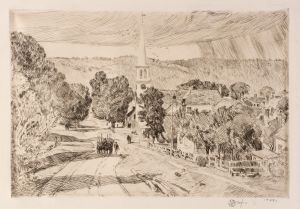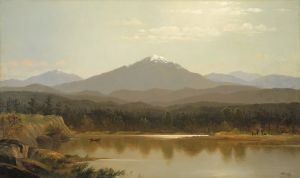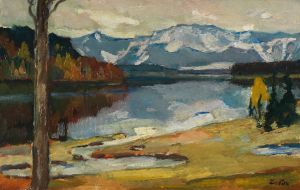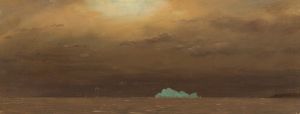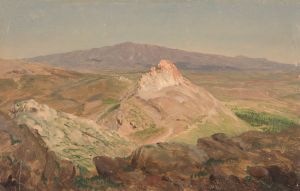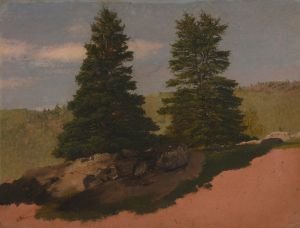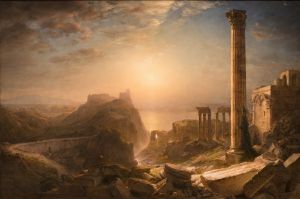
Mt. Katahdin from the South West
A hand-painted replica of Frederic Edwin Church’s masterpiece Mt. Katahdin from the South West, meticulously crafted by professional artists to capture the true essence of the original. Each piece is created with museum-quality canvas and rare mineral pigments, carefully painted by experienced artists with delicate brushstrokes and rich, layered colors to perfectly recreate the texture of the original artwork. Unlike machine-printed reproductions, this hand-painted version brings the painting to life, infused with the artist’s emotions and skill in every stroke. Whether for personal collection or home decoration, it instantly elevates the artistic atmosphere of any space.
"Mt. Katahdin from the South West" is a painting by the renowned American landscape artist Frederic Edwin Church. Church, a central figure in the Hudson River School, was known for his detailed and dramatic landscapes that often depicted the natural beauty of the United States and other parts of the world. This particular painting showcases Mount Katahdin, the highest mountain in the state of Maine, which is a significant natural landmark and a source of inspiration for many artists and writers.
Frederic Edwin Church was born in 1826 in Hartford, Connecticut, and showed an early aptitude for art. He became a pupil of Thomas Cole, the founder of the Hudson River School, which was a mid-19th century American art movement embodied by a group of landscape painters whose aesthetic vision was influenced by romanticism. Church's work is characterized by its attention to detail, dramatic use of light, and the portrayal of expansive and often sublime landscapes.
Mount Katahdin, the subject of this painting, is located in Baxter State Park in north-central Maine. It is the northern terminus of the Appalachian Trail and is known for its rugged terrain and stunning vistas. The mountain holds cultural significance for the Penobscot Native American tribe, and its name means "The Greatest Mountain" in their language.
Church's depiction of Mount Katahdin captures the majesty and serene beauty of the mountain as seen from the southwest. The painting reflects Church's skill in rendering natural light and atmospheric effects, a hallmark of his style. His ability to convey the grandeur of the American wilderness contributed to the growing appreciation of the country's natural landscapes during the 19th century.
The painting is a testament to Church's dedication to exploring and documenting the American landscape. His works often served as a visual record of the country's unspoiled natural beauty at a time when the nation was rapidly expanding and industrializing. Church's landscapes were not only artistic achievements but also cultural artifacts that reflected the American spirit of exploration and appreciation for nature.
"Mt. Katahdin from the South West" is part of Church's broader body of work that includes other iconic landscapes such as "Niagara" and "The Heart of the Andes." These paintings helped establish Church as one of the leading landscape painters of his time and contributed to the popularity of the Hudson River School.
Today, Church's works are celebrated for their artistic excellence and historical significance. They are housed in major museums and collections across the United States, where they continue to be admired by art enthusiasts and scholars alike. Church's legacy endures through his masterful depictions of the natural world, which continue to inspire and captivate audiences with their beauty and grandeur.






